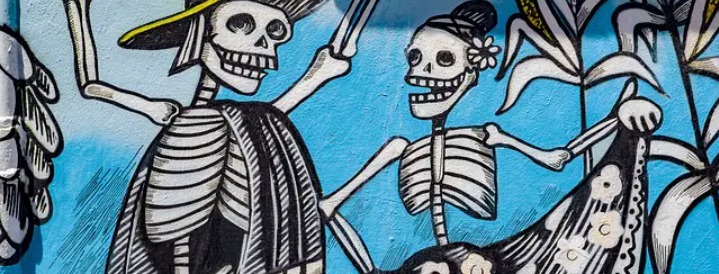Mexican Folk Painting Guide
Mexican Folk Art Painting is as varied as Mexican culture and like many other folk art styles in the country is a blend between Mesoamerican and Spanish cultures.
Mexican folk painting reflects the rich history and culture of Mexico, and it is a celebration of its people and traditions. In this post, we will explore the vibrant world of Mexican folk painting, its history, its significance, and some of the most famous artists and their work. From the iconic imagery of Frida Kahlo to the intricate designs of the Otomi people, we will take a journey through this beautiful and inspiring art form.
History of Mexican Folk Painting
Painting is one of the oldest artistic expressions in Mexican culture. The oldest paintings in the country are the cave paintings located in Baja California.
In the Mesoamerican areas, painting can be seen in buildings, codices, pottery, and clothes. Beautiful remains of Mesoamerican painting can be seen in the murals in Bonampak, Teotihuacan, Cholula, and Monte Alban.
Mesoamerican Cultures did not develop a complex writing system therefore they used codices filled with images, symbols, and hieroglyphics as a way to preserve their History.
Mexican Folk painting inherited this Mesoamerican quality; the artistic form goes beyond its aesthetic purposes and becomes a chronicle of the painter’s culture.
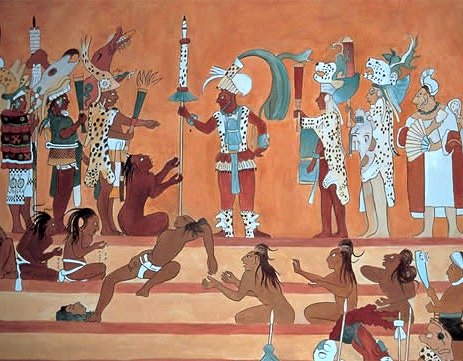
After the Spanish conquest, from the 16th to the 19th Century, painting in Mexico developed because of the need to decorate churches and monasteries.
Indian painters used European images and prints as a model for their paintings and created a new style called Indian Christian painting. Thousand of religious buildings were decorated by anonymous artists whose styles were very distant from the Spanish Baroque.
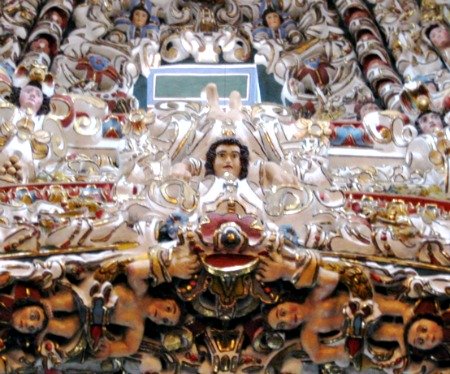
The local Baroque was brightly colored, filled with flowers and fruits. Its human figurines were naïve and there were reminisces of the pre-Hispanic designs and forms.
In the 19th Century after the Independence War, the Baroque style disappeared and was followed by a dull Neoclassic, but the folk painting did not disappear.
The Retablo
One of the most well-known types of Mexican folk painting is “retablos,” which are small devotional paintings on tin or wood. These retablos were initially created by Spanish colonizers to spread Catholicism among the indigenous population. However, over time, they evolved to incorporate native elements and became a unique blend of European religious imagery and indigenous symbolism.
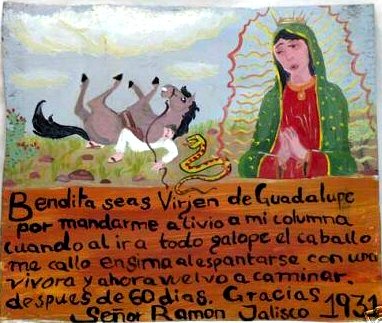
Retablo is an oil painting of zinc, copper, wood, or cloth, representing a miracle. Folk Painters were addressed by somebody that had experienced a miracle to paint the event on a retablo, as a gratitude gesture to the saint that had made the miracle.
The retablo or ex-voto was hung in the church next to the saint image. Many churches around the country are filled with retablos.
Alebrijes
Another prominent style is “alebrijes,” which are brightly colored sculptures of fantastical creatures. This art form originated in the 1930s in the town of San Martin Tilcajete, Oaxaca, and is often associated with the Zapotec culture. Alebrijes are meticulously carved from copal wood and then intricately painted with vibrant patterns and intricate details, making them truly mesmerizing to behold.
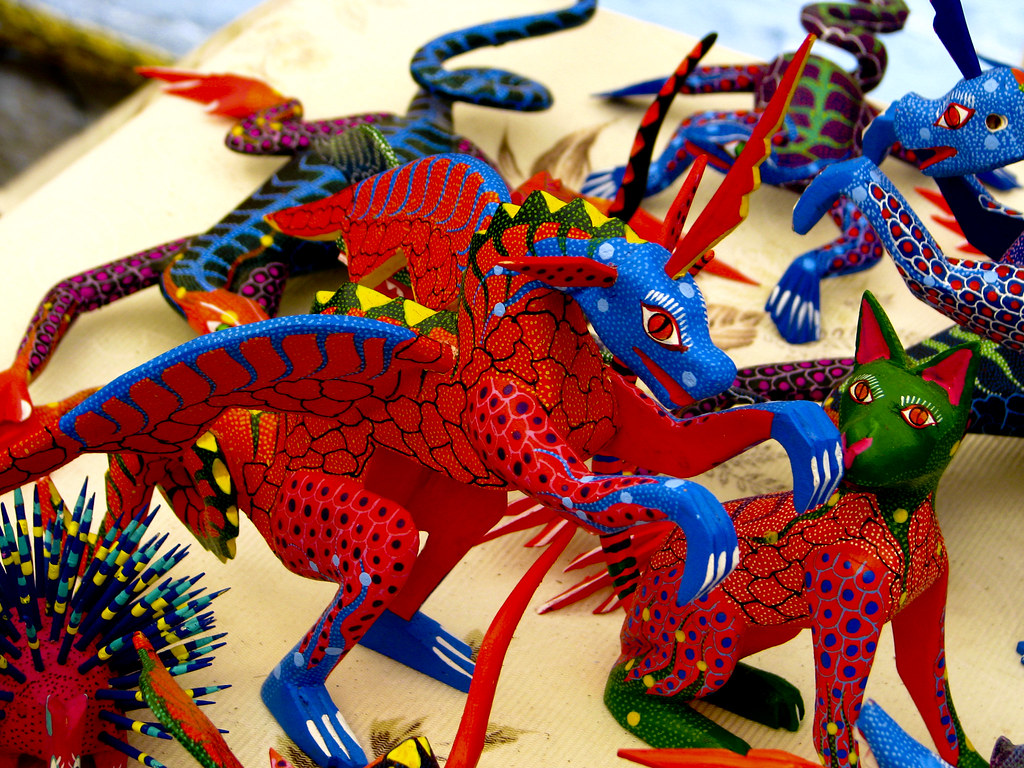
Pátzcuaro
In the state of Michoacán, the “Pátzcuaro” style of folk painting has gained recognition for its vibrant colors and intricate detailing. This style often depicts scenes from everyday life, traditional celebrations, and natural landscapes. The use of bold colors and fine brushwork makes Pátzcuaro folk paintings visually captivating and emotionally evocative.
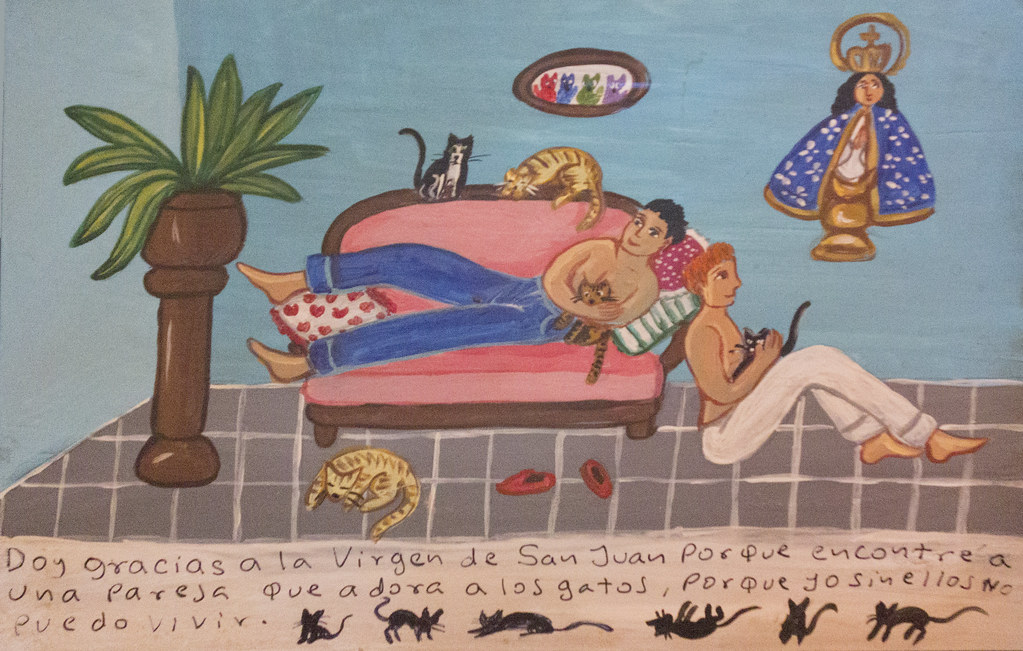
The artwork is deeply rooted in Michoacan’s rich cultural heritage, reflecting the region’s indigenous people, colonial influences, and ties to the Catholic faith. As the people of Michoacan have embraced this form of expression, it has earned increasing recognition from both local and international audiences, becoming an integral part of the state’s cultural identity.
Famous Mexican Folk Artists
When it comes to Mexican folk painting, there is a rich history of talented artists who have made a significant impact on the art world. Each artist has their own unique style that sets them apart and contributes to the vibrant world of Mexican folk painting.
Frida Kahlo
The renowned Mexican artist, Frida Kahlo, played a significant role in popularizing Mexican folk painting. Inspired by her indigenous heritage and deeply rooted in Mexican culture, Kahlo incorporated elements of folk art, such as bright colors, symbolism, and intricate patterns, into her own self-portraits and artworks. Her unique style and use of folk imagery brought Mexican folk painting to the attention of the global art community.
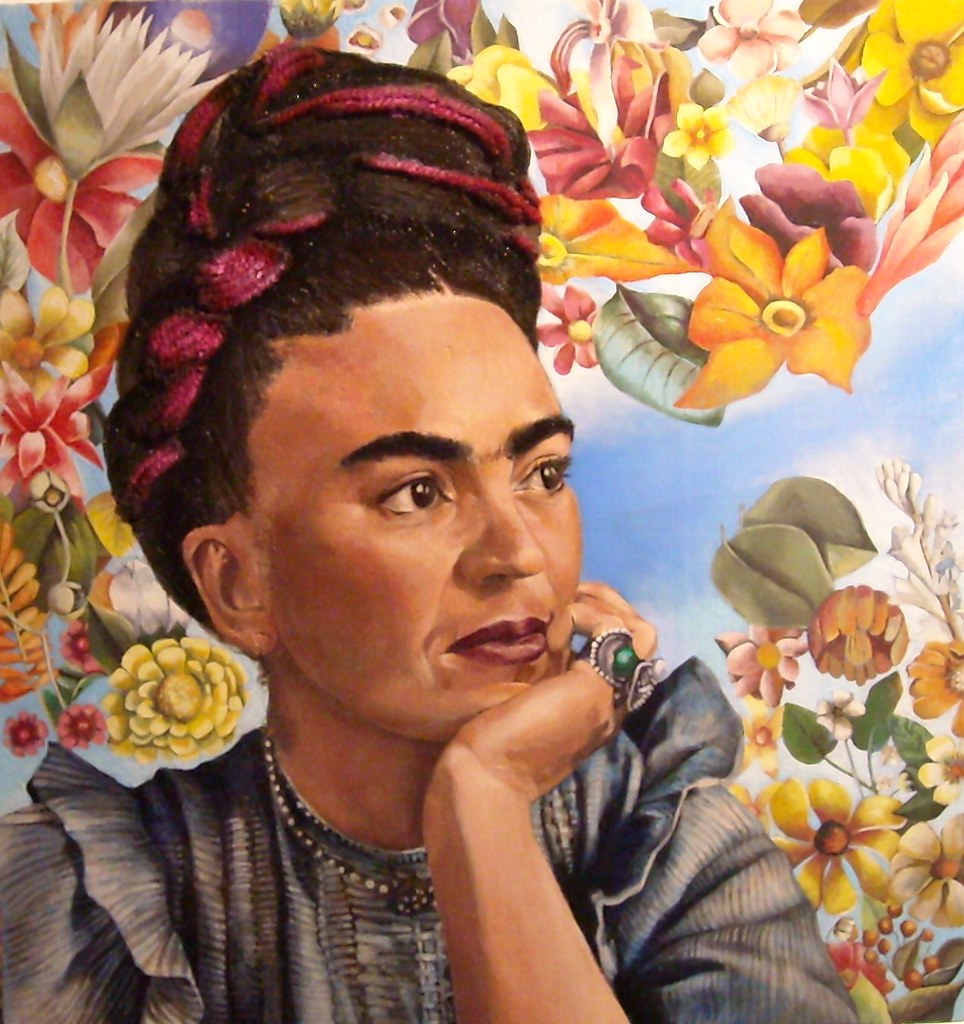
Diego Rivera
Another renowned Mexican folk artist is Diego Rivera. Known for his large-scale murals, Rivera’s work often depicted scenes from Mexican history and culture. His use of bold colors, strong lines, and detailed compositions captured the essence of Mexican folk art and brought it to life on a grand scale.
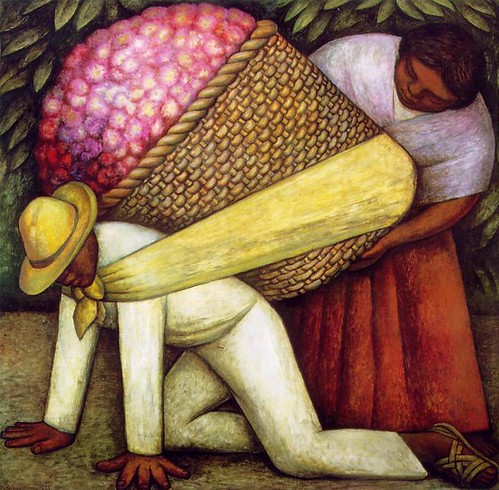
Throughout his career, Rivera produced countless masterpieces that depicted his beloved homeland. His vivid murals often featured iconic images of the Mexican Revolution and its heroes, while also conveying messages about social justice and progress. He also included elements of surrealism in his work, which created an ethereal and dreamlike quality to his pieces. Although much of his artwork has since been destroyed or lost over time, many of his remaining works can still be found in some of Mexico’s most important museums and monuments today.
Remedios Varo
Remedios Varo is one of the most iconic Mexican folk artists of the twentieth century. Varo’s work blended elements of surrealism and magical realism to create dreamlike narratives. Her paintings featured fantastical creatures, intricate details, and a sense of mystery that continues to captivate viewers to this day.
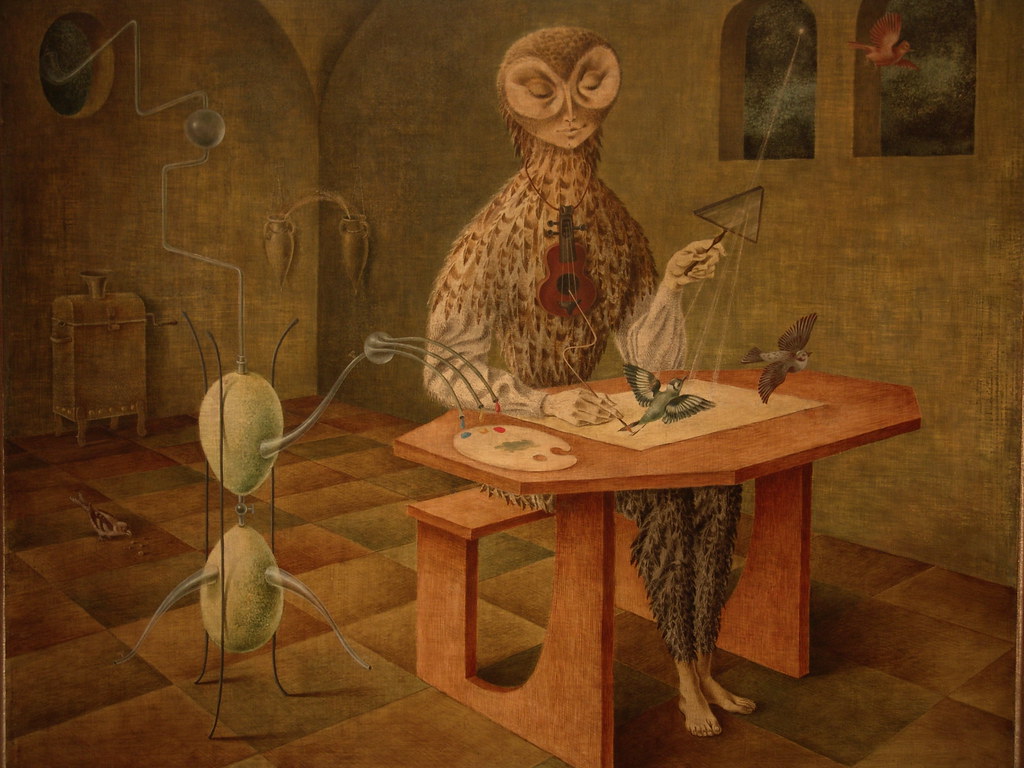
Varo’s influence extended far beyond Mexico, and her works can now be seen in major museums across Europe, North America, and South America. As one of the first Mexican female artists to achieve international acclaim, she also paved the way for younger generations of Mexican creators. Today, Varo’s legacy continues to inform and inspire emerging Latin American artists who seek to explore new frontiers of creativity.
Rufino Tamayo
Another notable Mexican folk artist is Rufino Tamayo. His paintings often showcased bold colors, abstract forms, and a mix of modern and traditional influences. Tamayo’s unique style combined elements of cubism, abstract expressionism, and Mexican folk art, resulting in visually striking and thought-provoking pieces.
![Rufino Tamayo - Women of Tehuantepec [1939]](https://freefun.guide/wp-content/uploads/2023/08/rufino-tamayo.jpg)
Popular Prints
Gabriel Vicente Gahona, Manuel Manilla, and José Guadalupe Posada published their prints in newspapers and leaflets.
Their illustrations were about common people and their traditions. Jose Guadalupe Posada with publisher Venegas Aroyo created The Calaveras, satirical epitaphs about the supposed death of politicians and celebrities.
Posada’s best-known illustration in this style is La Catrina, nowadays an iconic image in Mexico’s Day of the Dead celebration.
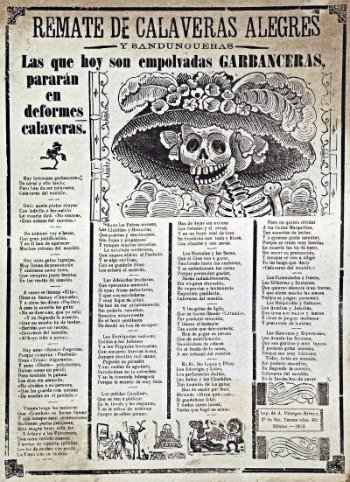
Their artwork was both humorous and evocative, often featuring grotesquely-caricatured skeletons with faces modeled after well-known figures in Mexican politics and culture. These cartoonish studies of death communicated an underlying message about the fleeting nature of fame and success; no one is truly above death’s reach.
Mexican Folk Painting today
Mexican folk painting continues to thrive today, with artists from various regions of Mexico adding their own unique perspectives and techniques to this artistic tradition. From the intricate patterns of the Huichol people to the vibrant scenes depicted in the paintings of the Nahua community, each region has its own distinctive style that reflects the local culture and history.
Diego Rivera said that Mexican folk painting was the most important painting style in the country because instinct and genius are present in it without the prejudice that makes the painter imitate the European culture.
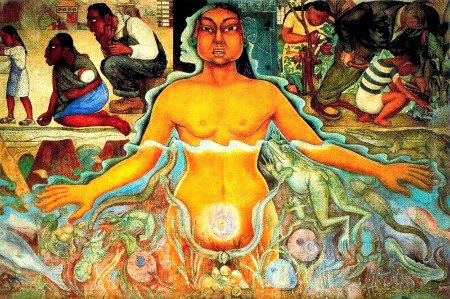
Mexican Folk Painting has a strong tradition hence various painting styles were developed. Like every artistic form these styles evolve, sometimes into different techniques other times into extinction.
Themes and Symbolism
Themes and symbolism play a significant role in Mexican folk painting, capturing the essence of Mexico’s rich cultural heritage and traditions. Each brushstroke and color choice holds deep meaning, telling stories that have been passed down through generations.
Celebration of Life and Death
One prevalent theme in Mexican folk painting is the celebration of life and death. Day of the Dead, or Día de los Muertos, is a popular festival that commemorates and honors deceased loved ones. Paintings often depict vibrant skeletons, known as calacas, engaged in various activities, symbolizing the belief that death is not an end but a continuation of life’s journey.
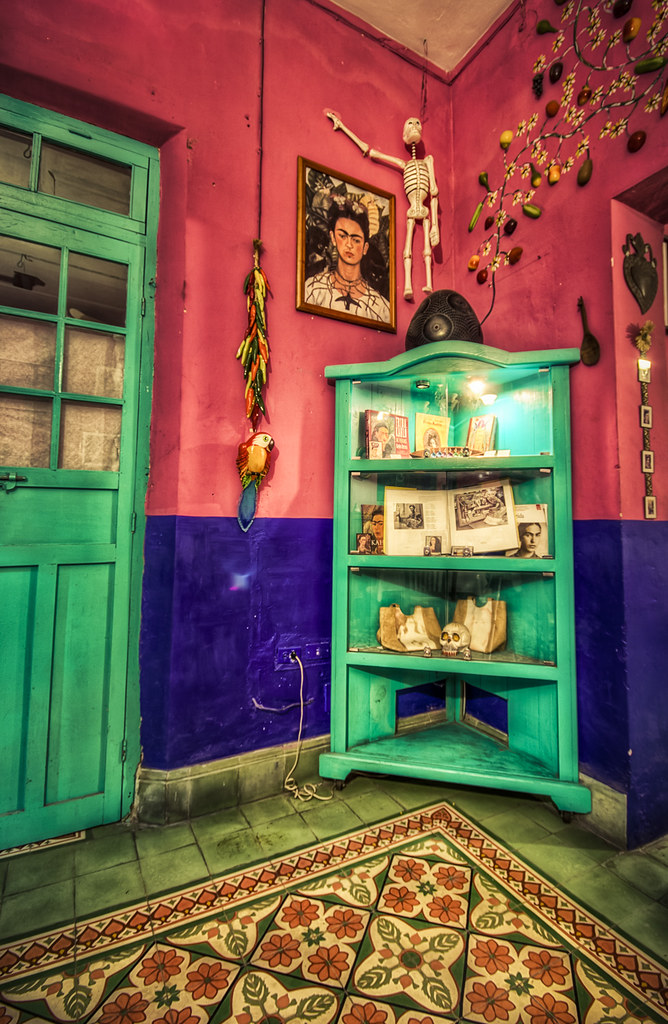
Religious Motifs
Religious motifs are also commonly found in Mexican folk paintings. Iconic images of the Virgin Mary, saints, and biblical scenes are often portrayed with vivid colors and intricate details. These paintings serve as expressions of faith and devotion, reflecting the strong influence of Catholicism in Mexican culture.
Nature and Animals
Nature and animals hold special significance in Mexican folk painting, representing the connection between humans and the natural world. Paintings featuring landscapes, flowers, and animals like birds and butterflies showcase the beauty and diversity of Mexico’s flora and fauna. These elements are often intertwined with human figures, emphasizing the interconnectedness of all living beings.
Colorful
Symbolism in Mexican folk painting goes beyond mere depiction. Colors play a crucial role in conveying emotions and cultural significance. For example, the color red symbolizes passion and love, while blue represents purity and spirituality. Yellow is associated with wealth and abundance, and green signifies fertility and growth. Artists carefully select colors to evoke specific feelings and communicate powerful messages.
Techniques and materials
Mexican folk painting, also known as “arte popular,” boasts a rich array of techniques and materials that contribute to its vibrant and distinct style. This art form is deeply rooted in the country’s history and culture, with each region showcasing its own unique approach.
Retablo
One of the most iconic techniques used in Mexican folk painting is the “retablo” or “lamina” painting. Retablos are small devotional paintings typically created on tin sheets or wooden boards. These paintings often depict religious figures, saints, or scenes from Mexican folklore. The intricate details and bright colors bring these retablos to life, capturing the essence of Mexican spirituality.
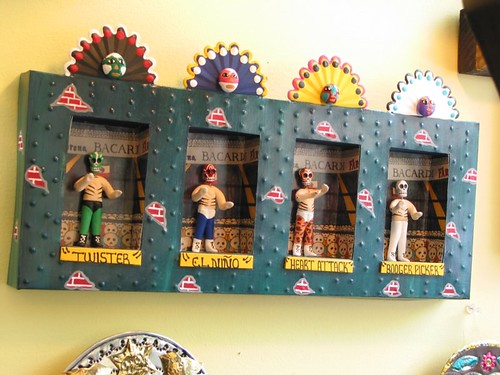
Amate
Another prevalent technique is “amate” painting, which originates from the indigenous Otomi people. Amate paintings are created on a type of bark paper made from the Amate tree. Artists use natural pigments derived from plants and minerals to produce vibrant and earthy tones. The depictions often revolve around nature, animals, and traditional motifs, showcasing the deep connection between the indigenous communities and their natural surroundings.
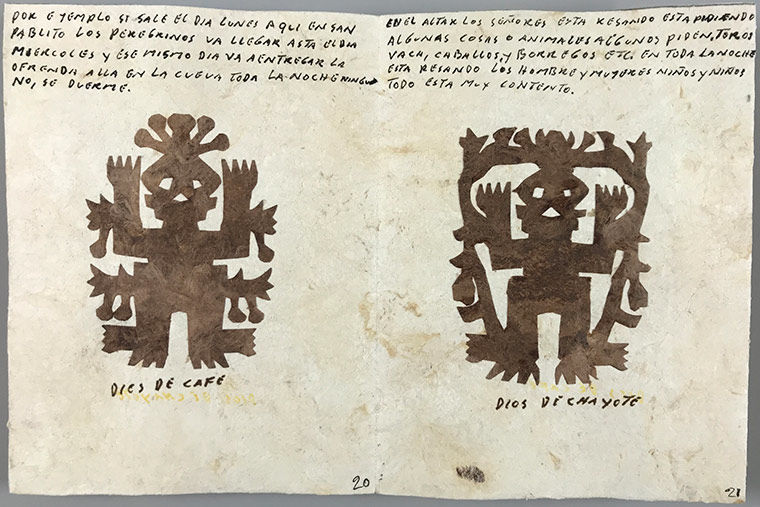
Folk Art Painting Styles in Mexico
Mexican folk painting not only serves as a visual delight but also serves as a testament to the resilience and cultural pride of the Mexican people. It is a form of artistic expression that celebrates their heritage, preserves their traditions, and invites viewers to immerse themselves in the vibrant world of Mexican folk art. Here’s a list of the most representative and valued folk art painting styles in Mexico:
Nahuatl Painting from the Balsas River
Mexican Folk Painting from the Balsas basin in Guerrero State started as decorated pottery called
Barro Pintado or painted clay. In 1962 Cristino Flores Medina and Pedro de Jesus considered pioneers in the Balsas painting style were introduced to Amate paper. On Amate the Nahuatl paintings evolved from colorful animals and flowers to intricate landscapes and scenes.
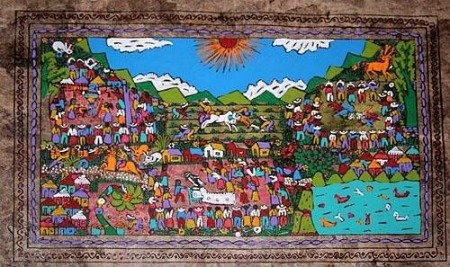
Folk Painters became chroniclers of their culture. This school arouses internationally known printmaker and painter Nicolas de Jesus.
The Huichol Art
The Huichol people are one of the few indigenous groups in Mexico that preserve their culture intact.
Their artistic work is made for religious and magical purposes and is filled with symbols that have a special meaning like the sun, deer, eagle, and snake. Huichol artwork is done on wood planks or gourds varnished with beeswax and decorated with colored yarn or plastic beads, called chaquiras.
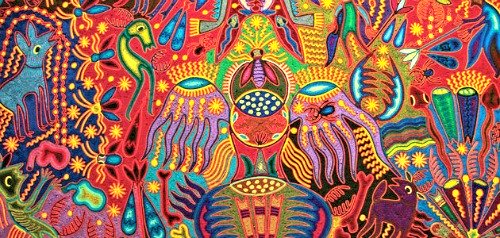
These pieces are filled with breathtakingly intricate symbols that each have a deeper spiritual or mythical meaning. The sun represents hope and rebirth, while the deer stands for renewal and fertility. The eagle symbolizes protection and strength, while the snake denotes preservation and transformation. Through these symbols, the Huichol people not only pay tribute to their ancient roots, but also give us a glimpse into their vibrant cultural heritage.
Mexican Lacquerware
Mexican lacquerware is the name given to the gourds and wooden objects varnished with a hand-prepared mixture that contains soil rich in dolostone and vegetable and animal oils.
These pieces are decorated using different techniques such as gold outlining, etching, and painting.
In Olinala the bigger pieces like chests are finely painted with the town’s landscape; its streets, churches, and houses decorate the outside and inside of the lacquered object.

Mexican lacquerware is an art form that has been around for centuries, and it continues to captivate audiences today. It dates back to the late 16th century, when a mixture of dolostone, vegetable oils, and animal fats were used to create beautiful finishes on wood and gourds. This mixture gave many items a glossy and vibrant finish, allowing them to be decorated with intricate designs that are still admired today. The resulting pieces often feature vibrant colors, intricate patterns, and mesmerizing effects that have garnered admiration all over the world.
Sawdust and Flowers Carpets
The sawdust and flower carpets are done in Patron saint’s celebrations and religious processions on the streets.
The whole community takes part in making the religious scenes; some dye the sawdust while others draw the artwork and fill it with flower petals and sawdust.
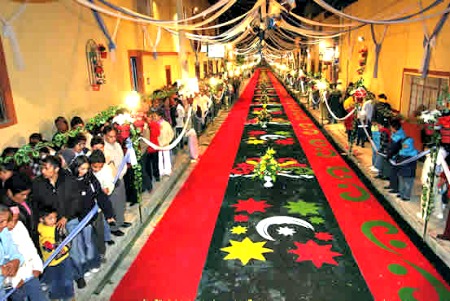
These carpets are constructed by painstakingly arranging petals, natural dyes, and fine sawdust on sidewalks and roads. The end result is a vibrant, breathtaking work of art that only persists for a brief amount of time before being destroyed—a testament to the beauty and impermanence of life.
Straw Paintings or Popotillo Art
Popotillo art is made in Mexico City, Michoacan, and Jalisco. The name popotillo art comes from popote de cambray the Spanish name given to sacaton grass.
The straws are dyed and carefully applied into a wood plank covered with beeswax forming landscapes, churches, houses, or Pre-Hispanic gods among many other themes related to Mexican culture.
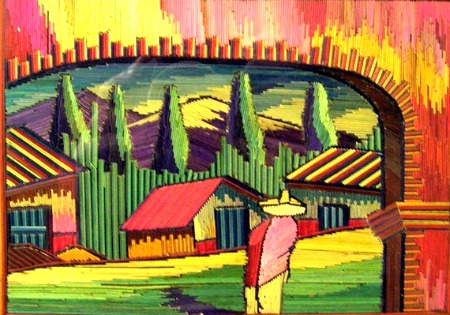
Popotillo Art is a unique and fascinating form of expression that combines the use of vibrant colors and delicate shapes to produce stunning works of art. Each piece often requires hours of tedious work to create its intricate and complex design. The artists use various techniques such as weaving, pressing, folding, cutting, and curling the straw to create their desired image. Once finished, the artwork is then treated with natural dyes and pigments to give it color and definition.
Feather Paintings or Arte Plumario
For Mesoamerican cultures, feathers were more precious than gold or silver. They were used as ornaments in clothes and as headdresses for royals, warriors, and priests. Another use given to feathers is unique in the world, crafters would weave them to create patchworks that represented landscapes.
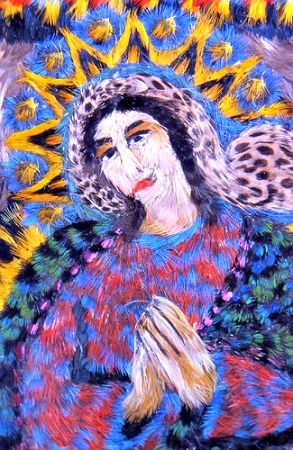
The Feather paintings survived the Spanish conquest but in the last century, their making has dwindled. Nowadays only the Olay family from Tlalpujahua, Michoacan preserves this unique tradition.
Final Word
We hope you have enjoyed exploring the vibrant world of Mexican folk painting with us! Mexican folk art is a true reflection of the rich culture and traditions of Mexico, and it is truly a feast for the eyes. From the intricate patterns to the vibrant colors, each piece tells a story and captures the essence of the Mexican spirit. We hope this blog post has inspired you to learn more about this beautiful art form and perhaps even start your own collection. So go ahead, immerse yourself in the world of Mexican folk painting, and let its beauty and creativity brighten up your life.
